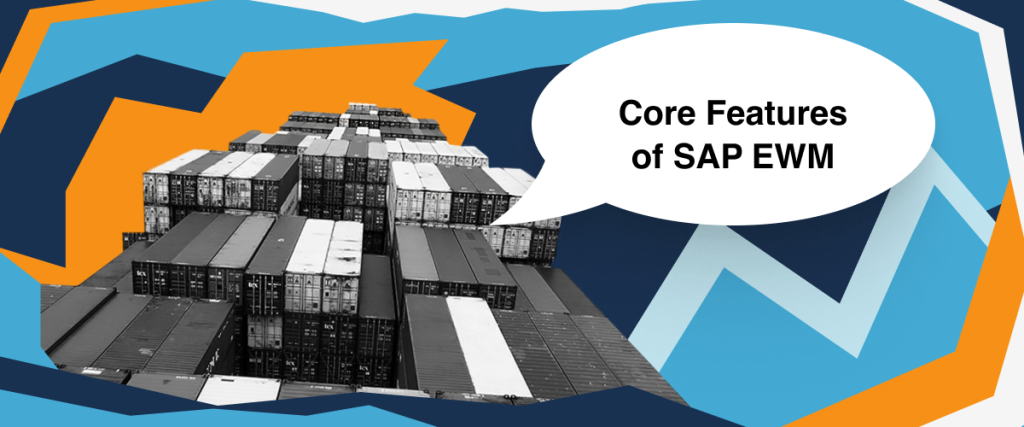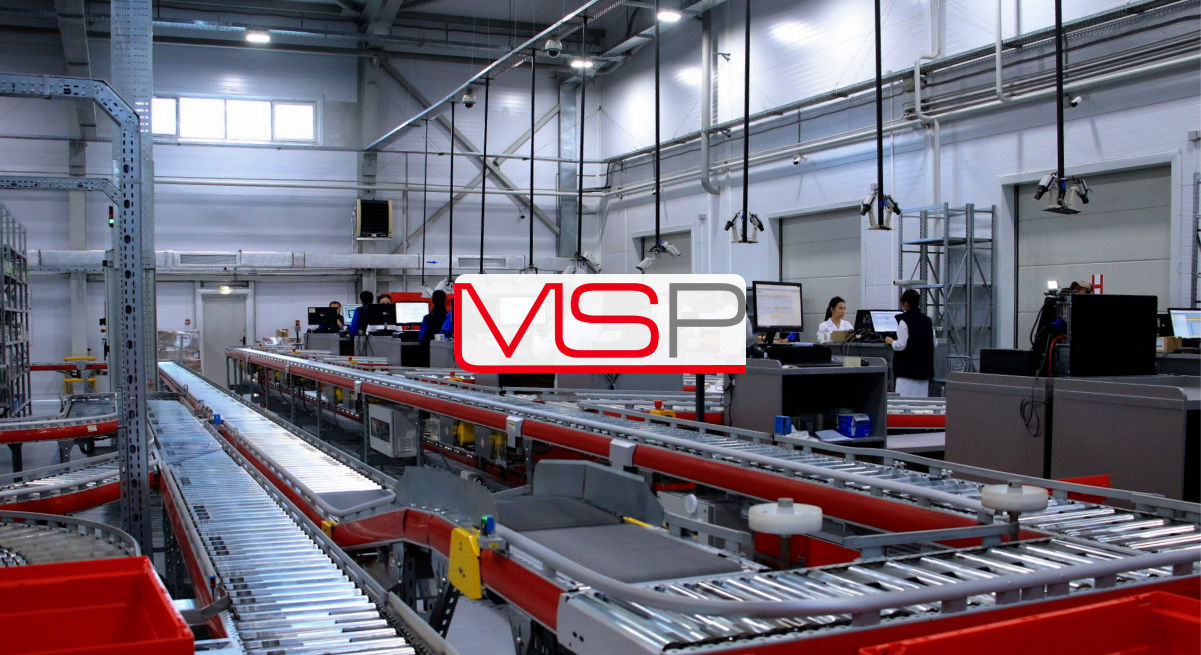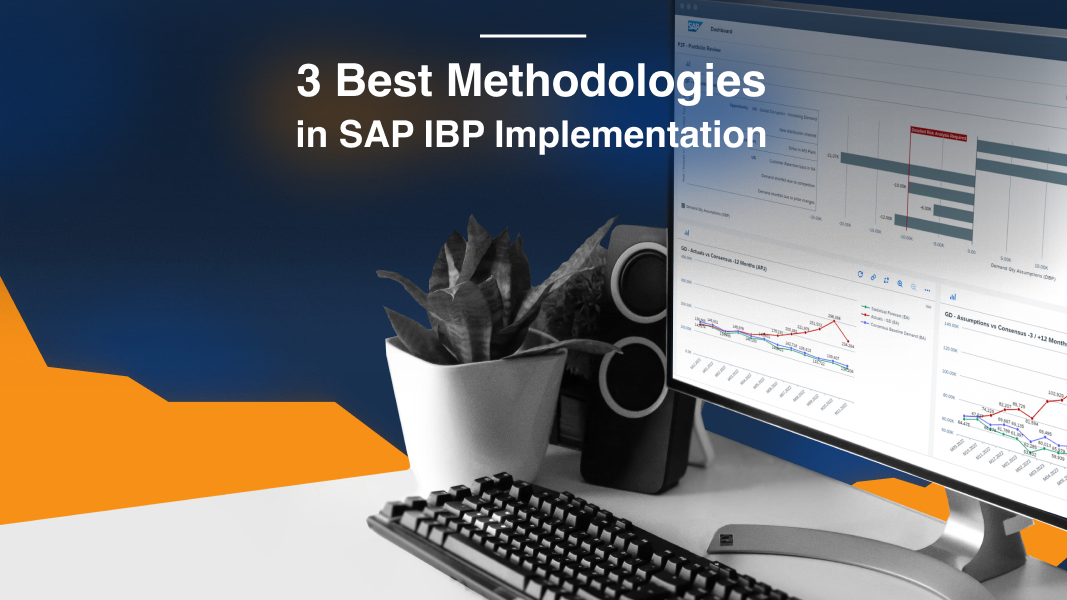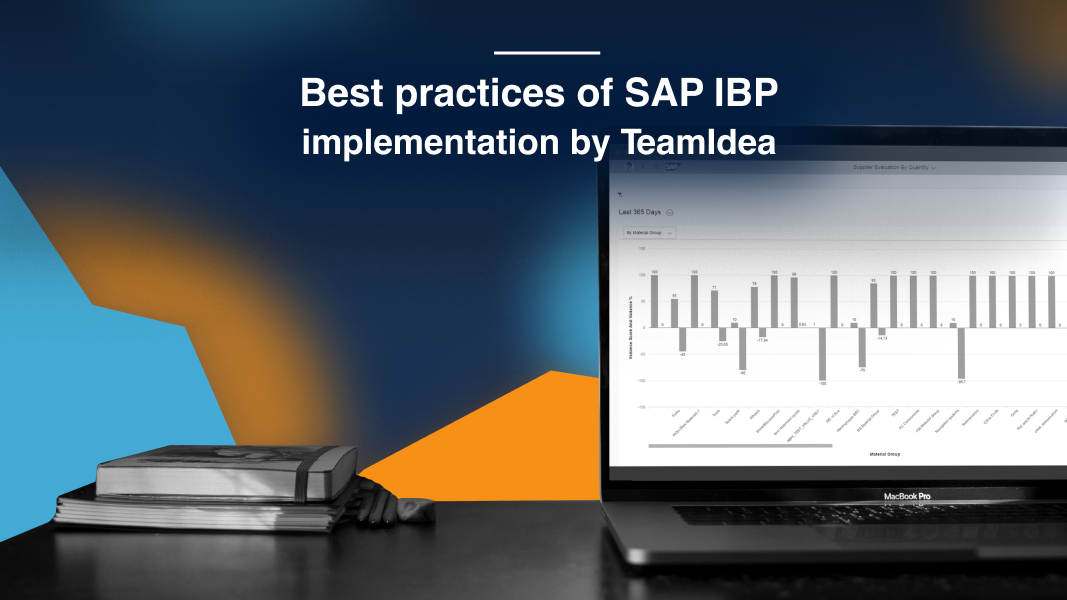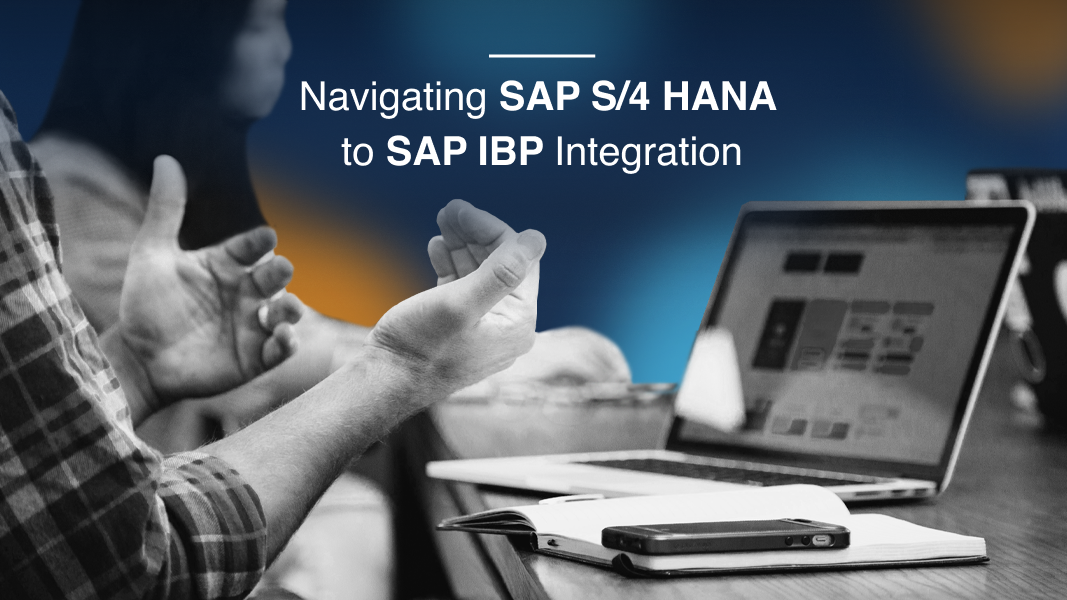9542
10 min
SAP Extended Warehouse Management: Everything You Need To Know

Introduction

From the busy floors of large distribution centers to the neat aisles of retail stockrooms, SAP Extended Warehouse Management (EWM) provides the tools necessary to manage and monitor the flow of goods with unparalleled detail. Whether you're a logistics professional looking to streamline warehouse operations or a business leader aiming to boost supply chain visibility, this article will show you how to achieve operational excellence with SAP EWM.
Brief Overview of SAP EWM
SAP EWM is a cloud-based platform designed to optimize inventory tracking, cross-docking, distribution operations, and multichannel fulfillment, among other warehouse processes. SAP EWM is part of SAP Supply Chain Management (SCM) and integrates seamlessly with SAP ERP systems.Importance of Effective Warehouse Management in Businesses
Proper warehouse management ensures that goods are stored, picked, packed, and shipped efficiently, reducing lead times and costs. It also plays an important role in inventory control, helping to minimize stock levels and avoid stock-outs or overstocking.Purpose of the Article
This article delves into SAP EWM, offering a detailed guide to this advanced warehouse management solution. Join us as we explore the functionalities that make SAP EWM essential in the modern supply chain, the challenges it helps overcome, and the success stories of companies that have used it to gain a competitive edge.Understanding SAP EWM
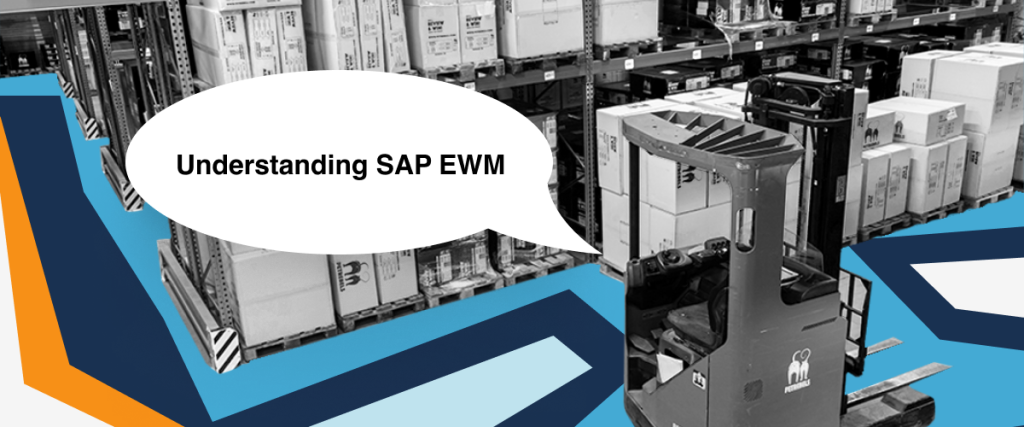
SAP EWM is engineered to streamline daily operations and provide strategic value with powerful analytics and reporting, helping businesses make smart decisions. It's a prime example of how warehouse management has evolved from simple storage to dynamic hubs that play a crucial role in supply chain success.
Definition of SAP EWM (Extended Warehouse Management)
What is the meaning of SAP EWM? SAP Extended Warehouse Management is a comprehensive warehouse management solution that provides advanced capabilities for managing complex warehouse operations. It offers visibility and control over inventory, enabling businesses to optimize their warehousing processes, from goods receipt to goods issue.Evolution of warehouse management systems (WMS) to EWM
The evolution from traditional Warehouse Management Systems (WMS) to SAP EWM represents a shift towards more integrated, intelligent, and flexible warehouse operations. While WMS are primarily focused on basic storage and movement of goods, EWM introduces a higher level of process optimization, real-time data analytics, and automation capabilities, catering to the needs of modern, high-volume warehouses.Key features and functionalities
SAP EWM provides a range of features and functionalities that set it apart from standard WMS solutions:- Advanced slotting and rearrangement. Optimizes product placement within the warehouse, improving picking efficiency and space utilization.
- Labor management. Tracks employee performance and helps in planning and monitoring warehouse tasks.
- Value-added services. Supports additional processing like packaging, labeling, and assembly within the warehouse.
By using these features, SAP EWM helps businesses respond to market demands quickly and accurately, leading to better customer satisfaction.
Benefits of SAP EWM
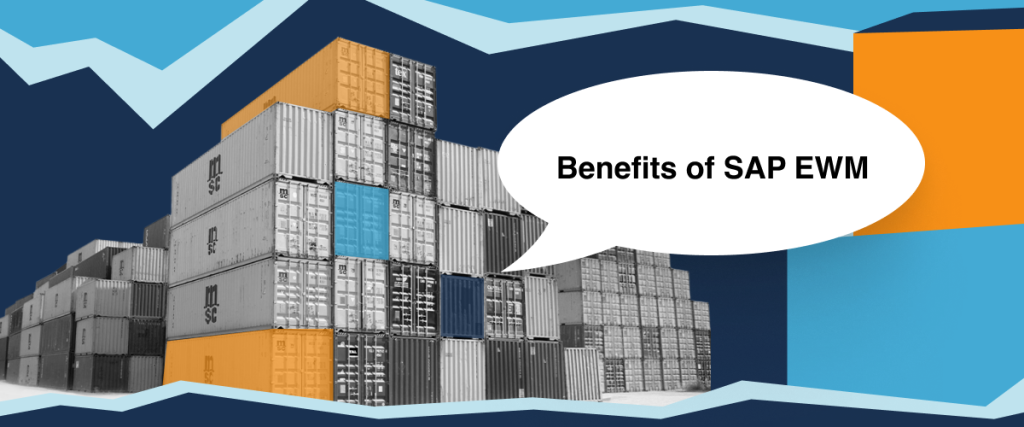
SAP EWM has many advantages over other solutions. Let's discuss 5 of the most important ones:
- Improved inventory accuracy.
- Enhanced operational efficiency.
- Real-time visibility and tracking.
- Streamlined warehouse processes.
- Integration with other SAP modules.
Improved Inventory Accuracy
SAP EWM significantly improves inventory accuracy through advanced radio-frequency identification (RFID) technology, automated data collection, and real-time system updates. This reduces the likelihood of errors associated with manual data entry and ensures that inventory records are always up-to-date, leading to better decision-making and customer satisfaction.Enhanced Operational Efficiency

By automating warehouse processes, SAP EWM enables organizations to achieve higher throughput rates and reduce labor costs. The system's ability to optimize storage and picking strategies, as well as its support for mixed pallet handling and cross-docking, contributes to more efficient warehouse operations.
Real-time Visibility and Tracking
With SAP EWM, businesses gain real-time visibility into their inventory and warehouse operations. The system provides detailed tracking of goods movement, enabling quick response to stock discrepancies and facilitating proactive management of supply chain activities.Streamlined Warehouse Processes
SAP EWM streamlines warehouse processes by providing flexible and configurable workflows. It supports complex warehousing tasks such as value-added services, kitting, and wave management, which simplifies operations and improves the speed and accuracy of order fulfillment.Integration with Other SAP Modules
One of the key advantages of SAP EWM is its seamless integration with other SAP modules, such as SAP ERP and SAP Transportation Management. This integration allows for a unified approach to managing logistics and supply chain processes, ensuring consistency and efficiency across the entire organization.Core Features of SAP EWM
- Warehouse structure and organization.
- Inbound and outbound processes.
- Inventory management.
- Labor management.
- Yard management.
- Cross-docking and wave management.
Warehouse Structure and Organization
SAP EWM allows for a flexible definition of warehouse structures, providing a detailed representation of the physical warehouse. This includes the configuration of storage types, sections, and bins, which can be tailored to meet the specific needs of various storage strategies.Inbound and Outbound Processes
The system streamlines both inbound and outbound logistics processes. For inbound processes, it supports activities such as deconsolidation, putaway, and quality inspection. Outbound processes are optimized with efficient picking, packing, and shipping operations, ensuring timely order fulfillment.Inventory Management

SAP EWM offers real-time inventory tracking and visibility, enabling accurate stock counts and immediate identification of discrepancies. Advanced features like slotting, rearrangement, and inventory sampling enhance the accuracy and efficiency of inventory management.
Labor Management
The solution includes labor management features that help in planning, monitoring, and analyzing warehouse employees' performance. It enables the assignment of tasks based on priorities and worker skills, improving overall productivity.Yard Management
SAP EWM offers yard management features to monitor and manage vehicles and transportation units in the warehouse yard. This includes scheduling dock appointments and tracking vehicle movements.Cross-Docking and Wave Management
To expedite the movement of goods, SAP EWM supports cross-docking, which allows for the direct transfer of products from inbound to outbound delivery. Wave management helps in optimizing picking and shipping activities by grouping orders into waves based on certain criteria.Implementation of SAP EWM
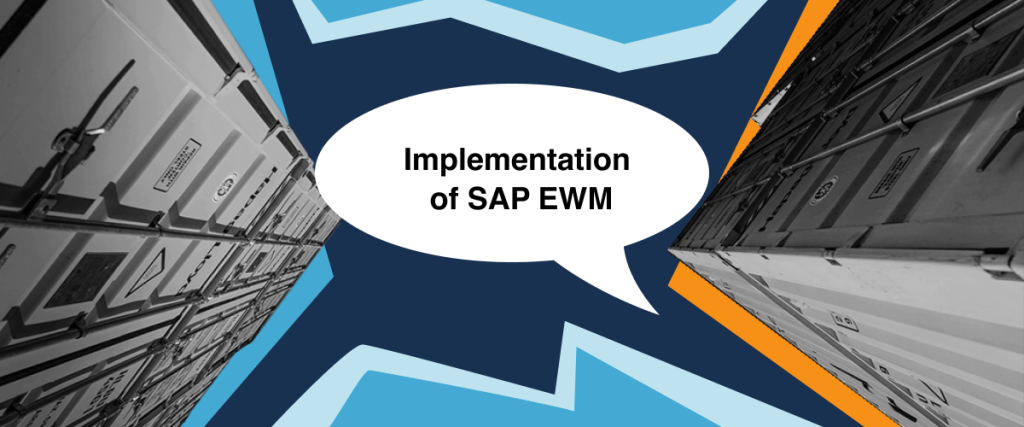
SAP EWM implementation includes 5 main phases:
- Planning.
- Configuration and customization.
- Integration with existing systems.
- Testing and training.
- Go-live and post-implementation support.
Planning Phase
The planning phase is critical in setting the foundation for a successful SAP EWM implementation. During this stage, businesses must define their objectives, scope, and requirements for the warehouse management system. Key activities include assessing current warehouse operations, identifying process improvements, and developing a detailed project plan that outlines timelines, resources, and budget.Configuration and Customization
Once the planning is complete, the next step is to configure and customize SAP EWM to fit the specific needs of the organization. This involves setting up master data, warehouse structure, and process workflows in the system. Customization may be required to address unique business processes or integration points, ensuring that the solution aligns with the company's operational strategies.Integration with Existing Systems
For SAP EWM to function effectively, it must be integrated with existing systems such as ERP, CRM, and other supply chain management solutions. This integration ensures seamless data flow and process continuity across the business landscape. Robust interfaces and data exchange mechanisms are crucial for real-time decision-making and operational efficiency.Testing and Training
Thorough testing is imperative to validate the configuration and customization of SAP EWM. This includes unit testing, integration testing, and user acceptance testing to ensure the system meets all requirements. Additionally, comprehensive training programs should be conducted to prepare end-users and IT staff for the transition, covering system functionalities and best practices.Go-live and Post-implementation Support
The go-live phase marks the official start of SAP EWM operations. A well-planned go-live strategy, including a cutover checklist and support structure, is essential for a smooth transition. After go-live, ongoing support and maintenance are crucial to address any issues promptly and to optimize system performance. Continuous improvement initiatives should be undertaken to adapt to changing business needs and to leverage new features and updates in SAP EWM.Case Studies

Let's take a look at some examples of successful SAP EWM implementation using TeamIdea's clients as an example. We’ve chosen clients from different spheres to compare their results.
Success stories of companies implementing SAP EWM
MARS: SAP EWM template solution for 8 factories in RussiaMARS is a US FMCG company. Main brands are Mars, Snickers, Milky Way, Twix, Bounty, M&M’s, Pedigree, Uncle Ben’s.
Goal: Sitenka DC is the biggest MARS DC in CIS, therefore, an outdated warehouse system replacing should significantly reduce the risk of stopping shipments to customers and stopping one of the factories that is located next to this DC.
Key project approaches: SAP EWM solution template is designed for all 8 factories, taking into account the warehouse topology and specific.
- Wave 1. Implementation at 7 factories (including scalable system landscape creation, basic processes and integrations): 4 Pet Food factories, 2 Chocolate factories and 1 Food-factory.
- Wave 2. Rollout to the Sitenka DC and adoption to its processes.
Project results:
- CIS SAP EWM template for 8 factories creation.
- Quality control management, including full traceability for each batch.
- Agile implementation methodology, as a result, high customer satisfaction with the final product.
- No business impact during go-live and minimum down time.
Komus: SAP EWM template creation
Komus is a leading company in the Russian market as a supplier of all kinds of office supplies.
DC figures:
- Over 1.5M SKUs.
- 7 Distribution Centers.
- More than 50 regional warehouses.
- Over 100 own stores.
- Significant annual increase in the volume of warehouse operations.
Key project approaches:
- Simultaneous implementation of interdependent projects for the implementation of a new ERP system, a new integration platform and new warehouse equipment.
- Huge integration scope with various SAP and non-SAP systems.
- Organizational changes in the company taking place at the same time as the SAP EWM implementation project.
Hochland RUS: SAP EWM template solution for raw/pack
SAP EWM 9.0 implementation narrow aisle warehouses, accounting for third-party services for repackaging and marking of goods.
- The SAP EWM solution was implemented for raw materials, packaging materials and finished goods. We have accumulated experience in supplying production from the warehouse, using third-party resources and services for repacking and marking the goods.
- Project scope includes 3 factories and 5 warehouses.
Challenges faced and solutions adopted
Implementing SAP EWM is not without its challenges. Companies often face issues such as data migration complexities, user adoption hurdles, and the need to customize the solution to fit specific business processes.To overcome these challenges, businesses have adopted various strategies, including phased rollouts, comprehensive training programs, and engaging with experienced SAP partners for guidance and support.
Additionally, leveraging SAP's advanced features like RFID technology and automation tools has helped companies to mitigate operational challenges and maximize the benefits of their EWM solution.
Comparison with Other Warehouse Management Systems
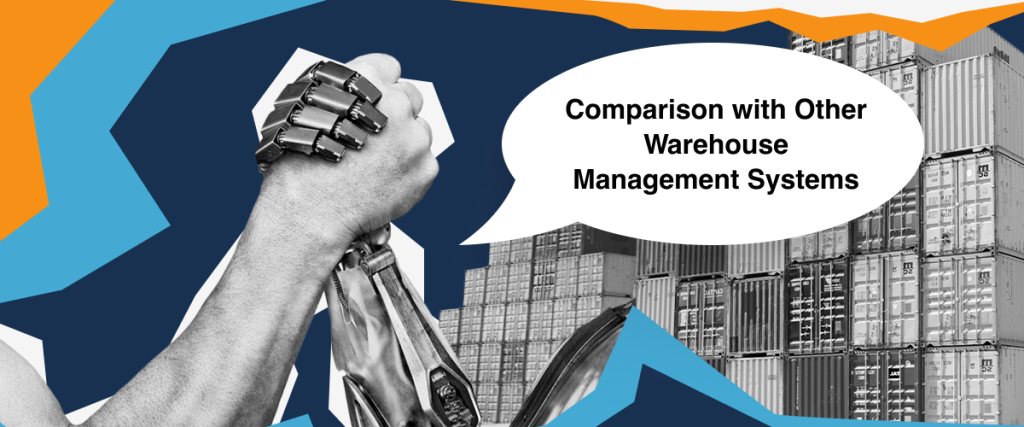
SAP EWM is superior to other solutions in many ways. The key differences include flexibility, scalability and the technologies used. Let's take a closer look at these advantages.
Contrasting SAP EWM with traditional WMS
Traditional Warehouse Management Systems (WMS) often focus on basic functionalities such as storage location management and inventory tracking. In contrast, SAP EWM offers a comprehensive suite of features that cover everything from goods receipt and warehousing to goods issue and transportation management. It supports advanced processes like wave picking, cross-docking, and slotting, which are not typically found in traditional WMS solutions.SAP EWM also provides real-time visibility into inventory levels and movements, enabling more accurate and timely decision-making. Its ability to integrate seamlessly with other SAP modules, such as Production Planning and Quality Management, allows for a more synchronized and efficient supply chain.
Comparison with other WMS solutions in the market
When compared to other modern WMS solutions in the market, SAP EWM stands out for its scalability and flexibility. It can handle the needs of both small warehouses and large distribution centers. Its functionality is not just limited to warehouse processes; it extends to yard management, labor management, and even task and resource optimization.Moreover, SAP EWM is designed to be adaptable to various industries, from retail and manufacturing to pharmaceuticals and automotive. This adaptability is a significant advantage over other WMS solutions that may cater to specific sectors or lack the depth of features that SAP EWM offers.
In terms of technology, SAP EWM is at the forefront, incorporating the latest trends such as IoT, AI, and machine learning to further streamline warehouse operations and predictive analytics. While other WMS solutions are also adopting these technologies, SAP's extensive experience and broad customer base provide a robust foundation for continuous innovation and improvement.
Future Trends and Developments

The future of SAP EWM lies in its continuous improvement to enhance warehouse efficiency and adaptability.
Advancements in SAP EWM Technology
We can expect more robust features for warehouse automation, including advanced robotics and automated guided vehicles (AGVs) integration. Real-time analytics will play a crucial role in optimizing warehouse operations, providing insights into performance metrics and enabling proactive decision-making.Integration with Emerging Technologies like IoT, AI, and Machine Learning
The integration of IoT will enable a more connected warehouse environment, where sensors and smart devices continuously feed data into the SAP EWM system for real-time tracking and monitoring. Artificial Intelligence (AI) and machine learning algorithms will predict demand patterns, optimize stock levels, and even suggest the most efficient picking routes. This will significantly reduce manual errors and improve overall productivity.Predictions for the Future of Warehouse Management
Looking ahead, warehouses will become more than just storage spaces; they will be intelligent hubs that anticipate changes and respond swiftly.- Predictive maintenance will prevent equipment failures by anticipating issues in advance.
- Sustainability will be a key focus, with systems designed to minimize waste and energy consumption.
- Blockchain technology could further enhance transparency and security in supply chain operations.
Conclusion
- SAP EWM is a comprehensive warehouse management solution that provides advanced capabilities for managing complex warehouse operations.
- SAP EWM is part of SAP Supply Chain Management (SCM) and integrates seamlessly with SAP ERP systems.
- SAP EWM enhances the ability of businesses to respond to market demands with agility and precision, ultimately leading to improved customer satisfaction.
- SAP EWM implementation includes 5 main phases: Planning, Configuration and Customization, Integration with Existing Systems, Testing and Training, Go-live and Post-implementation Support.
- To expedite the movement of goods, SAP EWM supports cross-docking, which allows for the direct transfer of products from inbound to outbound delivery.
Recap of SAP EWM and its Significance
SAP EWM extends beyond basic warehousing functions, offering advanced features such as optimized resource management, efficient process control, and enhanced visibility across the entire distribution network. Its importance lies in its ability to streamline operations, reduce costs, and enhance customer satisfaction through precise and punctual product deliveries.Final Thoughts on the Potential Impact of SAP EWM on Businesses
The potential impact of SAP EWM on businesses is profound. By integrating technologies such as automation, real-time data analytics, and IoT, SAP EWM transforms traditional warehouses into smart hubs that can adapt to changing market demands. This adaptability enhances operational efficiency and positions businesses to seize new opportunities, ultimately fostering increased competitiveness and growth.Encouragement for Further Exploration or Adoption
As the logistics landscape continues to evolve, the adoption of SAP EWM becomes increasingly essential for businesses seeking to maintain a competitive edge. Companies are encouraged to explore the full capabilities of SAP EWM and consider its adoption to harness the benefits of a truly integrated warehouse management system. With its robust architecture and scalability, SAP EWM is well-suited to support businesses of all sizes in achieving their strategic goals.Key takeaways
-
What is SAP EWM?
SAP Extended Warehouse Management (EWM) is a software solution designed to manage complex warehouse operations, offering functionalities like inventory management, inbound and outbound processes, and storage bin management. -
How does SAP EWM improve warehouse efficiency?
SAP EWM elevates efficiency by optimizing warehouse processes, improving inventory accuracy, automating tasks through advanced algorithms, and providing real-time data and analytics for better decision-making. -
What are the key features of SAP EWM?
Key features include advanced slotting and rearrangement, labor management, value-added services, and real-time visibility and tracking of inventory. -
Can SAP EWM be integrated with other systems?
Yes, SAP EWM integrates seamlessly with other SAP modules like SAP ERP and SAP Transportation Management. -
Who can benefit from using SAP EWM?
Businesses with complex and large-scale warehouse operations across industries such as retail, manufacturing, and logistics.
